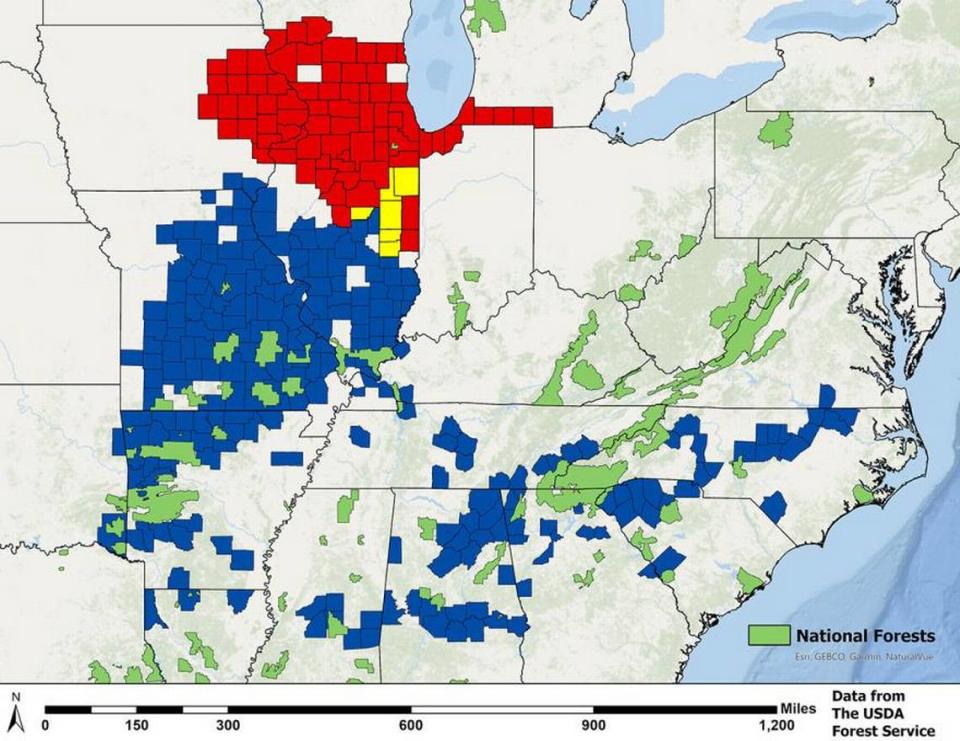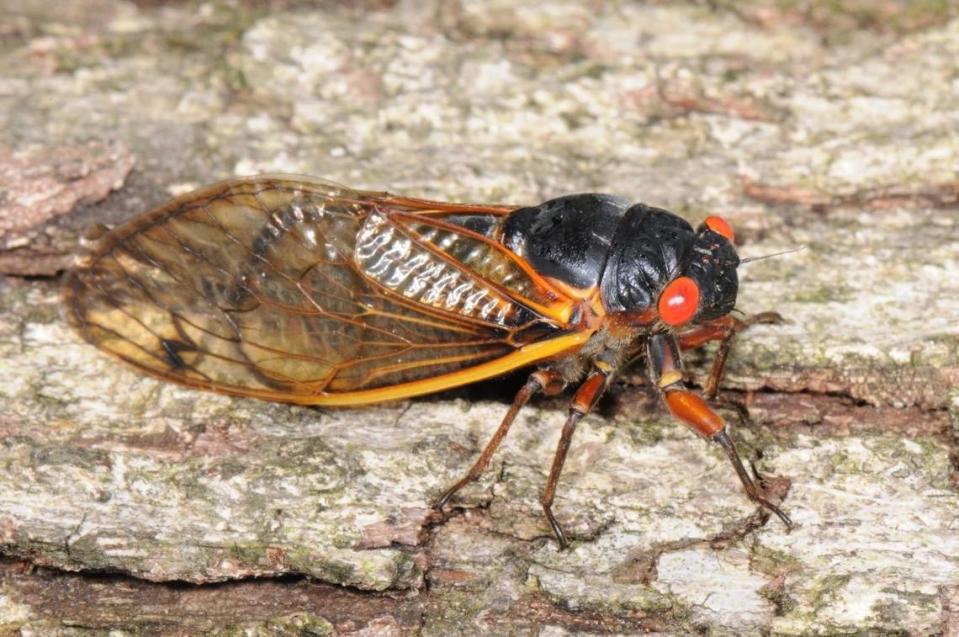The last time cicadas of Brood XIX scrambled out of the ground to shed their stifling exoskeletons and go hunting for their screaming soulmates, gas was $3.41 a gallon, North Carolina was reeling from a deadly tornado outbreak and people were watching the debut episodes of “Game of Thrones” on 70-inch TVs that cost nearly $4,000.
One thing hasn’t changed in the 13 years since they last emerged: The range of Brood XIX cicadas within North Carolina still extends over fewer than a fifth of the state’s counties. So while homeowners in Chatham County are poking at ghostly “skins” hanging on their tree trunks and hearing what is easy to imagine as a fleet of idling spaceships, in neighboring Lee County, nature is as quiet as a butterfly.

Where are the cicadas?
Typically, 13-year cicadas emerge in early May in North Carolina as the ground where they live warms to 64 degrees. Because of a warmer-than-average April they showed up a little early, with the first sightings in Chapel Hill during the first week of April and ones in Raleigh and Charlotte two weeks later.
Since then, around the Triangle, they’ve been buzzing in Cary’s Bond Park and humming in Hemlock Bluffs, and have made themselves known in wooded neighborhoods in Cary, Apex, Holly Springs, Chapel Hill, Durham, Hillsborough and Pittsboro.
According to Cicada Mania, a website dedicated to “the most amazing insects in the world,” in North Carolina, the bugs of Brood XIX will be found only in 16 counties: Buncombe, Cabarrus, Chatham, Davidson, Davie, Durham, Gaston, Guilford, Mecklenburg, Montgomery, Orange, Randolph, Rowan, Stanly, Union and Wake.
Why aren’t periodical cicadas all over the state?
Unlike the ubiquitous mosquito or the pesky ant, which can thrive anywhere in North Carolina, periodical cicadas have particular needs, according to entomologists at N.C. State University.
They live only a tiny fraction of their lives above ground, beginning as eggs laid by a female into a slit she saws in a twig on a living tree.
The eggs hatch into larvae and drop to the ground, where they burrow into the dirt next to a woody plant or tree. There they remain, slowly growing on the nourishment they get from sucking sap from the tree’s roots, for 13 years.
In the spring of the 13th year, they tunnel out and find a solid surface on which to molt, pushing out of the hard skin that’s a couple of sizes too small. Dr. Matt Bertone, diagnostic entomologist with the N.C. State University Plant Disease and Insect Clinic, compares it shedding a pair of too-tight leather pants.
By the next day, their nymphal bodies harden and they fly or crawl into a tree and begin trying to attract a mate. The male does this by “singing,” or vibrating tymbal organs in his abdomen, generating a noise that can be as loud as a motorcycle engine. The females click their wings less noisily in response.
Four to six weeks after emerging, periodical cicadas die off and the cycle begins again with the larvae they have left behind.
For all this to work, Bertone said, periodical cicadas need:
▪ The right kind of soil
▪ Trees. They can’t survive in grasslands. And while they are opportunistic feeders, they seem to prefer hardwoods.
▪ Continuity of habitat. While the larvae are in the ground, clearing their trees will destroy their habitat and remove their food source. Paving over the ground makes it impossible for them to emerge.
▪ Other cicadas. Bertone says individual periodical cicadas that emerge in areas where there aren’t large numbers of their kind will follow the sound of the brood and fly off “to be where the party is,” increasing the chances of finding a mate.
Where to go to see Brood XIX cicadas
The University of Connecticut is the U.S. Census Bureau of periodical cicadas.
Project members travel the country when different broods emerge to confirm whether cicadas are still present in areas where they have been reported in the past. They mark the spots on a map.
So if you live in a county that’s known to have Brood XIX cicadas but you don’t see — or hear — them in your neighborhood, visit a wooded park or go to one of the UConn-verified sites near Pittsboro, such as:
▪ Jordan Lake State Recreation Area (Seaforth Access has hosted Brood XIX cicadas in the past) or
▪ Lower Haw River State Natural Area
Or, in Pittsboro, take a walk on the greenway encircling Central Carolina Community College, looking down as you go. This week, cicadas have been walking along the path and buzzing in the tree canopy. There is a huge oak tree on the campus, just past the parking area in front of the Chatham Community Library, that’s covered in shed cicada skins.


If you hear something, say something
Scientists like to track the emergence of periodical cicadas, and you can contribute data on these insects the same as if you help the National Audubon Society count birds. To participate, download the Cicada Safari app to your phone or use iNaturalist.
Could NC’s cicada season make us see more copperheads? Here’s what wildlife experts say
Five whales have died along NC’s coast this year. Here’s what researchers know so far.
Source Agencies



